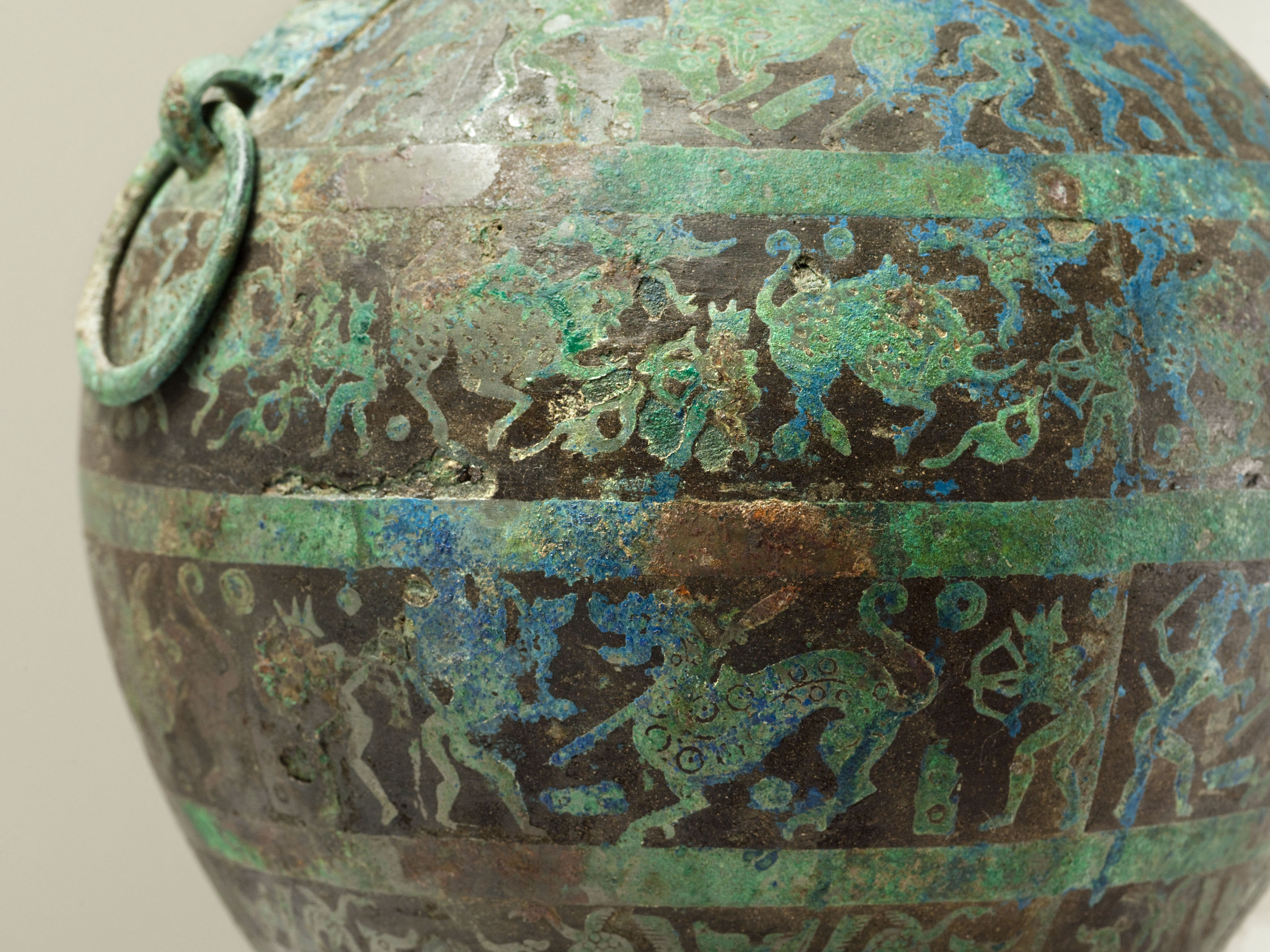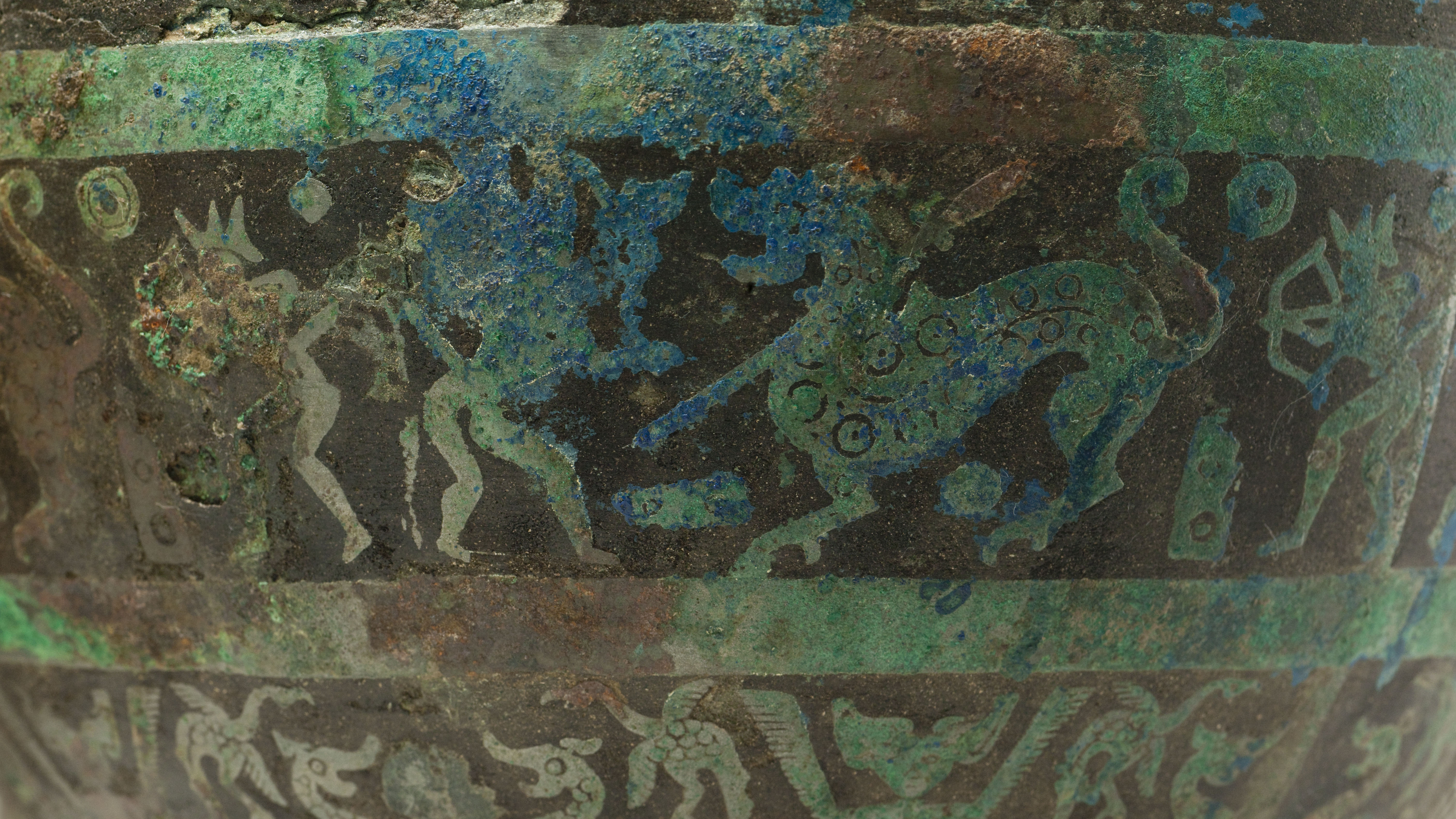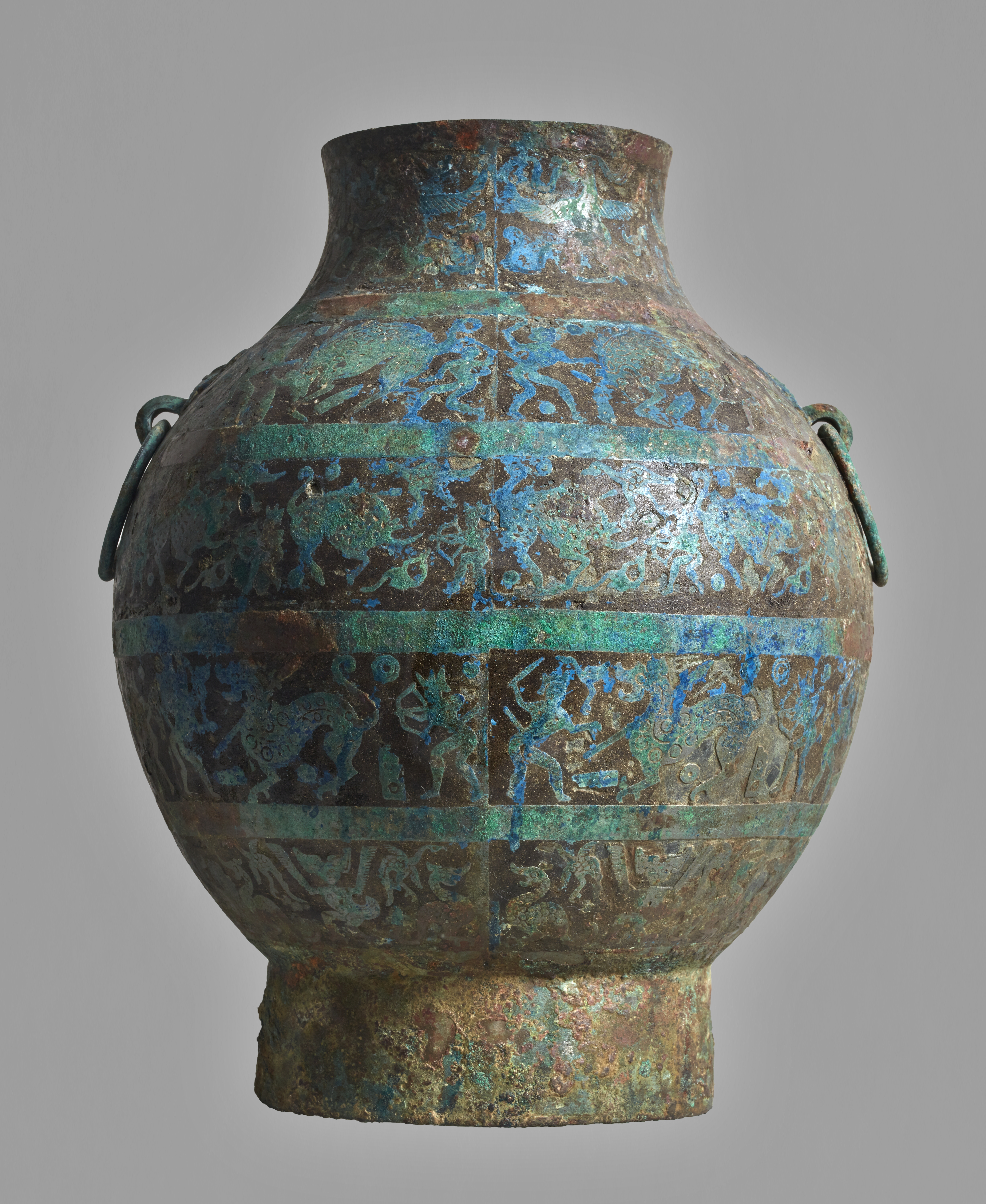
Vase hu 壺
Bronze, Fonte
Vaisselle et ustensile de cuisine, Récipient (vaisselle), Vase, Objet religieux
Don manuel : Zuellig, Stephen
M.C. 2005-4
The 6th-5th centuries BC saw a taste for ceramics with a composite and polychrome surface, for which two new techniques were developed. The first, as illustrated by the Cernuschi Museum hu acquired in 2003 (MC 2003-2), consisted in applying red copper plaquettes in moulds before pouring the bronze. This process, perhaps inspired by the appliqué textiles of nomadic pastoralists, probably came from northern China, before spreading, via the northern territories controlled by the kingdom of Chu, to southern China, where it was used to produce splendid works. This was a complex technique, however, requiring great skill and dexterity.
Another technique of perhaps more recent origin consisted in fashioning motifs in very high relief and filling in the backgrounds with different materials such as turquoises, lacquer, or pastes the nature of which, to our knowledge, has not been written about. The Cernuschi Museum hu was produced using the second technique, with a mixture of paste and a few fragments of turquoise.
Alongside this taste for composite materials, storiated decorations began to appear in this period, particularly in northern China. This hu is decorated with panels depicting repetitive series on five bands: tiger hunts, the animal pierced by a spear, an archer taking aim; hunts after a horned or tusked animal (a kind of wild boar?), a spear-wielding hunter taking aim; birds of prey with spread wings, and so on.
Numerous public collections have one or several pieces of this type, most often circular- or square-section hu featuring more or less storiated panels.

